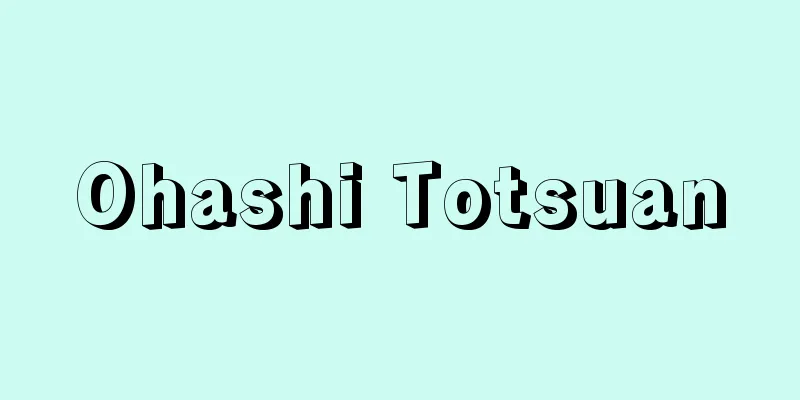Ohashi Totsuan

|
1816‐62 (Bunka 13‐Bunkyu 2) A patriot of the late Edo period. Born in Edo as the fourth son of military scholar Shimizu Akagi, he was adopted by Iiyama feudal lord Sakai Rikizo, but then separated and returned to Edo, where he was adopted by Nihonbashi merchant Ohashi Tanga (Kikuchi Tanga). Commonly known as Junzo, his given name was Seijun, his pen name was Shudo, and his pen name was Nutsuan. He studied Confucianism under Sato Issai, and with the help of his foster father, who was also a scholar, he opened the Shiseijuku school in Nihonbashi, but he soon became inclined towards the radical Sonno Joi ideology. His main work is Hekijiya Shogen, published in 1857 (Ansei 4). During the Ansei Purge, he volunteered to bury the body of Yori Mikisaburo, which had been exposed to the public. Source: Heibonsha World Encyclopedia, 2nd Edition Information |
|
1816‐62(文化13‐文久2) 幕末の志士。兵学者清水赤城の四男として江戸に生まれ,いったん飯山藩士酒井力蔵の養子に迎えられたが,離別して江戸に戻り日本橋の商人大橋淡雅(菊池淡雅)の養子となる。通称順蔵,名は正順,字が周道,訥菴は号。儒学を佐藤一斎に学び,学者でもあった養父の協力で日本橋に思誠塾を開いたが,やがて過激な尊王攘夷思想に傾いた。57年(安政4)刊の《闢邪小言(へきじやしようげん)》が彼の主著である。安政の大獄に際し,さらされていた頼三樹三郎の死体を葬るなど有志としての行動があった。 出典 株式会社平凡社世界大百科事典 第2版について 情報 |
Recommend
Household economy - Household (English spelling)
Managing and governing the various matters related...
Teso tribe (English spelling)
The Iteso are semi-agricultural, semi-pastoral peo...
upper arm
...The hand is from the wrist down. [Arm] Because...
Edo Masu - Edo Masu
〘Noun〙 A masu issued by Edo Masuza. It is 5 sun lo...
Fig - Fig
A deciduous tree of the mulberry family native to ...
Marguerite de Navarre
1492‐1549 A French female writer. She was the sist...
Gamara, A.
...Even after the failure of S. Bolivar's att...
Académie du Palais (English name)
… After the 17th century, academies left the hand...
Acting technique
...Specifically, the contributions of the followi...
National Air and Space Museum
…The Society's main facilities are located in...
golden spider lily
...It is believed to have originated from a hybri...
Merchant bank
A financial institution active in London's lon...
Opava - Opava (English spelling)
A city in the northern part of Moravia in the Cze...
Kuang-tai-xie-xue (English: The science of evil and wickedness)
This is a term used by the Chinese literati critic...
Munmu-wang (English spelling)
[Raw] Shinpei-oh 48 (626) [Death] King Shinmun 1 (...









